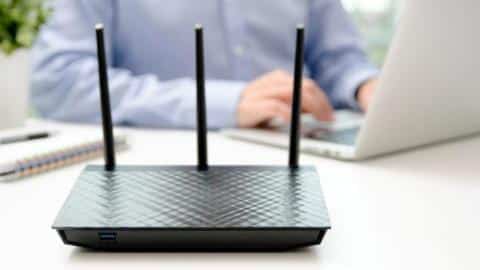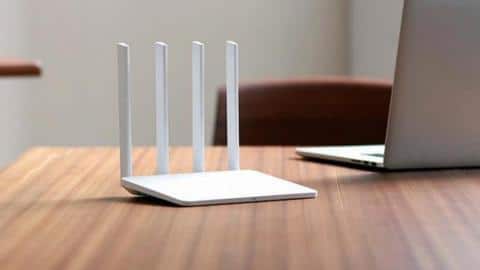Difference, 2.4GHz vs 5GHz WiFi speed and when to choose each.
Difference, 2.4GHz vs 5GHz WiFi speed and when to choose each.
The wifi speed changed your internet provider or got a new router, it is more than likely that the new router already uses a dual frequency band for the WiFi signal of your home. These are known as the 2.4 GHz and 5 GHz bands. In this case, you will be able to choose which band you will be able to connect your device to as each one is configured separately and even has different passwords.
What are the advantages of each of them and when you should use one or the other band on your WiFi? These and many other doubts are common among many users, so we are going to clear them up in a clear and simple way.
The wifi speed makes the 2.4 GHz band easily saturated and full of interference from other devices.
With the arrival of WiFi 4, a new standard has been introduced in the data transmission via WiFi over a 5 GHz band. The increase in the speed and coverage of WiFi networks frees up the load that the 2.4 GHz band is currently supporting.
In addition, the 5 GHz band provides a larger number of channels, with a higher bandwidth and channels do not overlap with contiguous channels, so that routers that support these signals can handle a larger number of devices simultaneously and a greater amount of data, so that your connection speed is improved in general terms.
What are WiFi frequency bands?
Some manufacturers and retailers make a frequent mistake when labeling their products by abbreviating the frequency band supported by indicating that it is 5G instead of labeling it as 5 GHz.
It is easy to find wifi speed routers claiming to have 5G connectivity which would refer to the 5th generation of mobile communications; instead of 5 GHz which is the frequency at which WiFi networks broadcast.
Routers using a WiFi 802.11 g (WiFi 4) or earlier standard are incompatible with Wifi networks broadcasting on 5 GHz frequencies, therefore if your router is somewhat older, it is possible that it only transmits in the 2.4 GHz band..
The router will display the bands separately, as if they were two different WiFi networks, each with a different network name (SSID) and access password.
The back of your router will indicate the name and password for access to each of the two networks used by the router for each frequency band. Some brands do not indicate which is the 5 GHz network, but differentiate them by adding the suffix "Plus" or "+" to the network name.
When it is best to connect to the 2.4 GHz band and when to connect to the 5 GHz band
One of the most decisive factors when it comes to choosing the right connect to a WiFi network operating in either the 2.4 GHz or 5 GHz band is the coverage and connection speed offered by each one.
The band of 2.4 GHz emits at a lower frequency so its signal can reach fartherIt is less affected by the obstacles in its path. On the other hand, networks transmitting in this band offer a higher speed between 50 and 70 Mbpsand, therefore navigation will be slower.
On the other hand, WiFi networks that are broadcasted in the 5 GHz band offers maximum connection speeds approaching 1 Gbpsbut they are much more susceptible to obstacles, so that its coverage is lower.
If you are connecting from a location far from the router and want a stable connection, it is recommended to connect to your 2.4 GHz network. On the other hand, if you are relatively close to the router and need maximum speed, the ideal is to use the 5 GHz band.
For a few years now, routers have been offering two frequency bands on which they transmit the WiFi signal data in your home. Just as radio or television signals do, the antennas transmit the content data on a modulated signal to a receiver. In the case of the routers, the frequency of that WiFi signal can be 2.4 or 5 GHz.. Each of them offers different features that we will show you below.
The WiFi used to transmit the data on your home WiFi network was the one broadcasting at 2.4 GHz. This makes this 2.4 GHz band the most widely used band for routers. and most devices.
What are the differences between these two frequency bands?
This 2.4 GHz frequency band is divided into 13 22 MHz channels each one through which the data from your WiFi connections circulate. In the 2.4 GHz band these channels are very narrow and overlap with nearby channels.
This is known as saturation of WiFi channelsThis is very common in densely populated areas where there are many WiFi networks broadcasting on the same channels.
To add a little more difficulty, the 2.4 GHz band is also used to transmit communications from radio-frequency devices such as drones and remote-controlled cars, wireless peripherals such as mice and keyboards, console controllers and microwave ovens, among many other devices.
You can also choose one or another band depending on the use of the devices and the required connection needs.
For example, you can connect the plugs, speakers, lights and other devices in your connected home to the 2.4 GHz network; which will surely offer better coverage for your entire home, and reserve the 5 GHz band for computers, consoles, mobiles and Smart TVs; which will need a higher bandwidth to play online games, surf at maximum speed or watch streaming series.
Beware of device compatibility
Another aspect to to consider when choosing whether to connect to a 2.4 GHz or 5 GHz WiFi network is the compatibility of the devices.
If the device has been on the market for some time, it probably does not support 5 GHz networks. As a general rule, all cell phones and tablets from 2016 onwards will seamlessly connect to 5 GHz WiFi networks.
How can you tell if a device is compatible with the 5 GHz band? Well, the answer is very simple, just try to connect it to a network that operates on this frequency. If it is not compatible, it will try to connect, but the router will not be able to assign it an IP address because it is not compatible.without further consequences.
Intelligent WiFi, let your router manage the connection
The most advanced routers have intelligent connection management systems that support both frequency bands.
These routers are capable of automatically redirecting devices connected to your WiFi to a 2.4 GHz or 5 GHz band.





Leave a Reply
You must be logged in to post a comment.